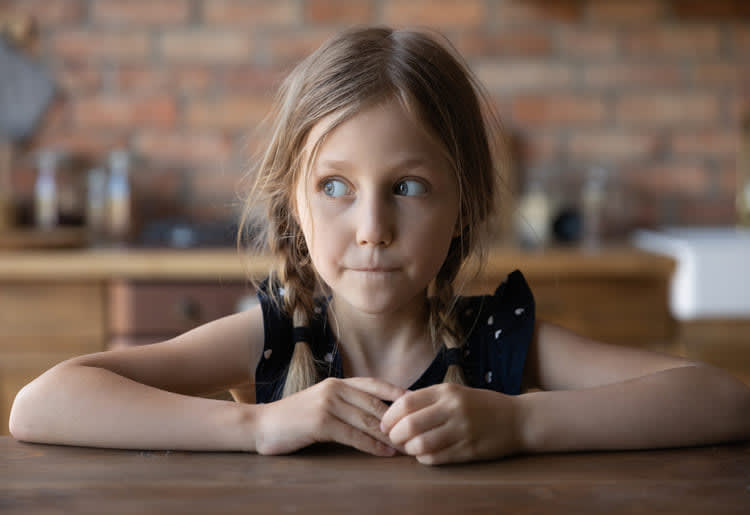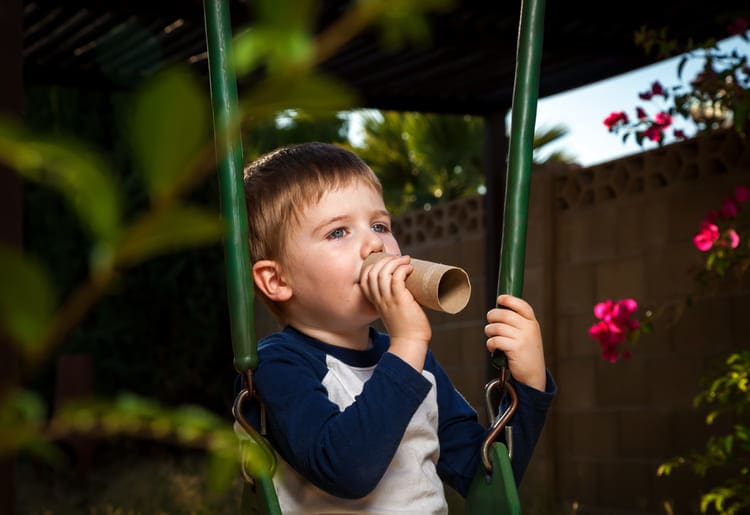As a parent, it's important to know which signs to look for so that you can get your young one help—via online therapy or in-person therapy—sooner than later.
Obsessive-compulsive disorder (OCD) affects 1 to 3% of children and adolescents. Around one-quarter of life-long OCD cases begin before age 14, with males being more likely to display OCD symptoms earlier than females—often before 10 years old.
Earlier intervention can reduce the likelihood that a child or teen's OCD behaviors will last into adulthood.
» Want to make sure your child gets sufficient support? Check out our top picks for the best online therapy services for teens.
What is OCD?
Obsessive-compulsive disorder (OCD) is a debilitating mental health condition characterized by obsessions and compulsions.
Obsessions are recurrent or persistent unwanted and intrusive thoughts, urges, and/or images that cause significant anxiety and distress.
Compulsions are behaviors engaged in to reduce or prevent obsessions and their resulting distress. Often, compulsions are carried out in accordance with a set of rigid rules people with OCD believe they must adhere to.
Not all compulsions are realistically connected to the emotion or obsessive thought they're designed to manage.
Children's risk of OCD can be increased by genetics (having a first-degree relative with OCD) and temperament (shyness, high emotional reactivity, low expenditure of physical energy).
Physical and sexual abuse, as well as other childhood trauma, can also increase a child's risk of developing OCD, as can autoimmune conditions and exposure to certain viruses and bacteria.
Here are 10 hallmarks of childhood OCD that every parent should know.
1. Extreme Worry about Getting Sick, Contaminated, or Dying
It's normal for kids to wonder about life and death and the risk of these inevitable outcomes to themselves and their loved ones.
But if a child is preoccupied with these concerns on a daily or near-daily basis, it crosses a line into obsession—especially if these concerns impair their sleep, appetite, and ability to participate in school or social activities.
2. Intense Fear of Doing Something Wrong
Children with OCD often have a debilitating fear of making a massive mistake or unintentionally harming themselves or someone they love and care about.
This fear of doing something wrong—an obsession—is often so great that it prevents them from acting altogether, resulting in behavioral inhibition and impaired social relations.

3. Disturbing, Unwanted Thoughts
Obsessions can also manifest in children with OCD as intrusive thoughts that are highly disturbing and unwanted.
These thoughts may include images of violence, scenes of harming oneself or others, graphic sexual acts, and urges to say or do things that don't align with a child's personality, value system, or interests.
» Here's how online therapy for OCD can help your child.
4. Overly Structured Rigidness
A child with OCD may act in ways that are noticeably ritualized and overly structured (think: arranging their toys, school supplies, or clothing in a specific order; or dressing or bathing themselves in a specific sequence).
Disruption of these rituals causes them distress. And if interrupted, they often feel compelled to start them over again. This is an example of a compulsion.
5. Frequent Checking
Another common compulsion among children who have OCD is frequent checking—say, that a door is locked, a special item of theirs is in their backpack or pocket, zippers on clothing or personal items are perfectly closed, or that no dirt or stains remain on their skin or clothing.
The need to check must cause them significant distress to be considered a compulsion and often results in making them late and impairing their focus while doing important activities, such as homework, chores, or socializing.
6. Excessive Washing or Cleaning
Coupled with frequent checking, children with OCD may excessively wash or clean their hands, hair, other body parts, or personal belongings.
This may be due to a fear of contamination, as a ritualistic way to ensure they won't be subjected to scrutiny or humiliation, or to distract their minds from disturbing obsessions.

7. Repeatedly Apologizing
Apologies are a hallmark of children developing empathy and learning to take responsibility for their actions.
But if a child apologizes constantly, displays a noticeable level of anxiety or distress when they do so, and doesn't seem to be soothed by having their apology accepted, it may be a compulsion.
» First time using online therapy? This is how it works.
8. Constantly Seeking Reassurance
Children with OCD may repeatedly ask for reassurance ("Am I going to be okay?", "Do you still love me?", "Are you mad at me?") to relieve their anxiety and fear. And they may seem only slightly calmed by receiving such reassurance.
Unfortunately, the more parents and caregivers offer reassurance, the more they risk reinforcing this compulsive behavior.
9. Repetitive Behaviors
Many children with OCD engage in odd-seeming behaviors like walking back and forth through a door several times, opening and closing a cabinet multiple times, or touching an object a fixed amount of times.
These are all compulsions that may serve to quell intense anxiety and distress or "undo" perceived consequences of violating internal rules or beliefs like, "If I think bad thoughts about my mom, she's going to get hurt."
10. Hoarding
Collecting items of little or no obvious value, experiencing immense distress at the prospect of discarding them, and believing something horrible will happen in the event such items are misplaced, moved, or gotten rid of can be another sign of OCD in children.

How to Help a Child with OCD
Effective treatments for childhood OCD include exposure and response prevention (which supports children in facing fears and triggers while helping them resist urges to behave compulsively) and cognitive behavioral therapy (which helps children recognize and challenge unhelpful thought patterns that give rise to obsessions and compulsions).
Online-Therapy.com, for example, is specifically designed to impart cognitive behavioral therapy skills to clients.
Additionally, online OCD therapy and online teen therapy can help young people gain insight into their symptoms and build skills like distress tolerance that help them manage obsessions and compulsions.
Families are often involved in treatment. Parents are taught how they may be reinforcing OCD behaviors (think: excessively reassuring children or not giving them opportunities to face their fears). Parents are also taught how to help children implement skills like emotion regulation and exposure to age-appropriate triggers.
Many parents of children struggling with OCD find they too need support. Some signs you need therapy include disrupted sleep and appetite, irritability, and difficulty handling stress at home and work.
» Take a look at the best online cognitive behavioral therapy services.
